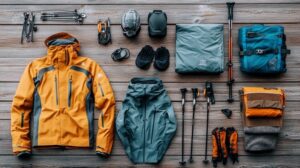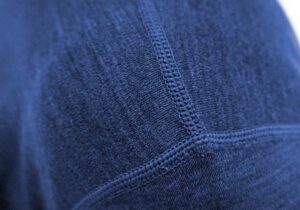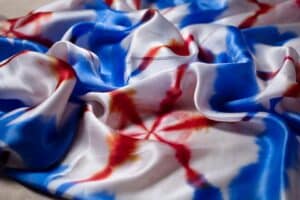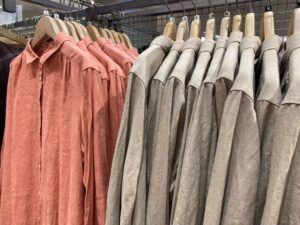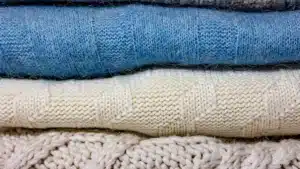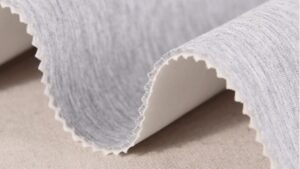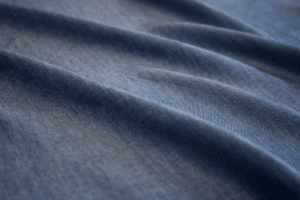Breathability Rating is a measure of how well a fabric or material allows moisture vapor (such as sweat) to pass through it from the inside to the outside. This is a critical feature in outdoor clothing, especially for activities like hiking, running, or climbing, where you generate a lot of body heat and sweat. A high breathability rating means the fabric is better at wicking moisture away from your body, keeping you dry and comfortable.
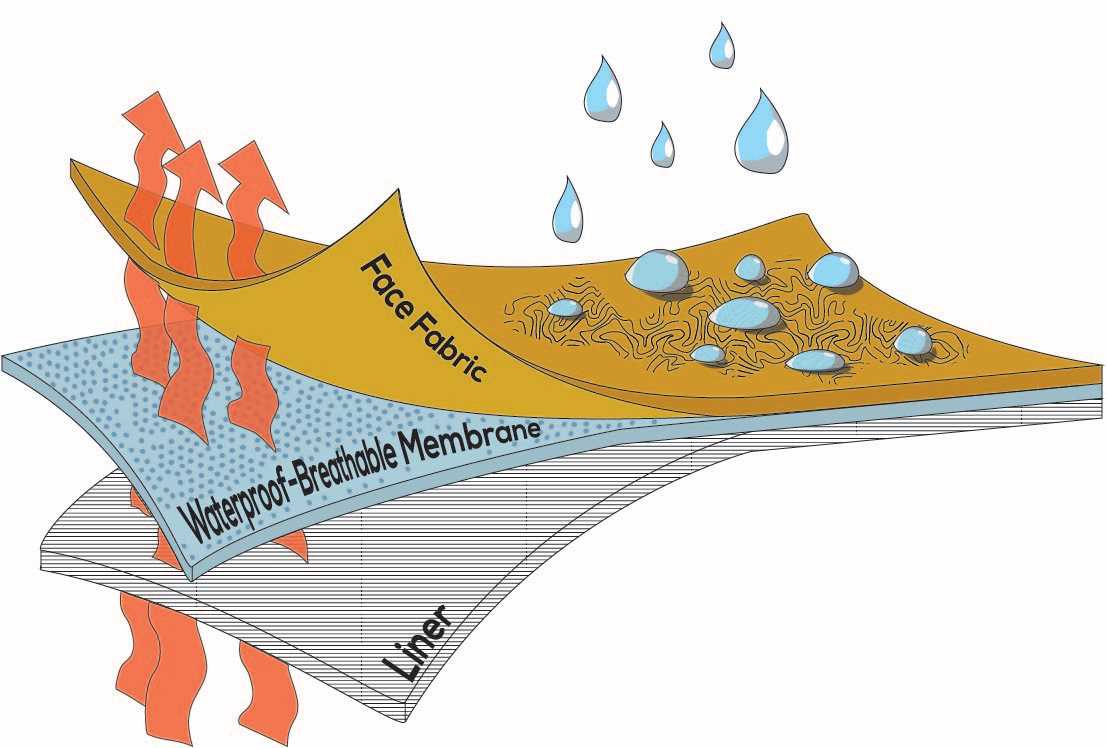
How Breathability is Measured
Experts check fabric breathability using MVTR and RET methods. These tests show how well air and sweat pass through fabric.
MVTR (Moisture Vapor Transmission Rate) measures how much sweat vapor leaves fabric in a day. Higher MVTR numbers mean better breathability. These numbers show how much sweat the fabric can handle. This makes MVTR great for sports clothes.
RET (Resistance to Evaporative Heat Transfer) checks how hard it is for sweat vapor to pass. Lower RET numbers mean the fabric breathes better. The Hohenstein ISO 11092 test uses a heated plate to mimic body heat and sweat. A RET below 6 means very breathable fabric. A RET above 30 means the fabric doesn’t breathe well. This test helps compare fabrics in controlled settings.
- Common Units:
- MVTR (Moisture Vapor Transmission Rate), g/m²/24hrs (Grams per Square Meter per 24 Hours) - A higher MVTR value indicates higher breathability.
- RET (Resistance to Evaporative Heat Transfer), Pa.m²/W (Square Metres Pascal per Watt) – A lower RET value indicates higher breathability.
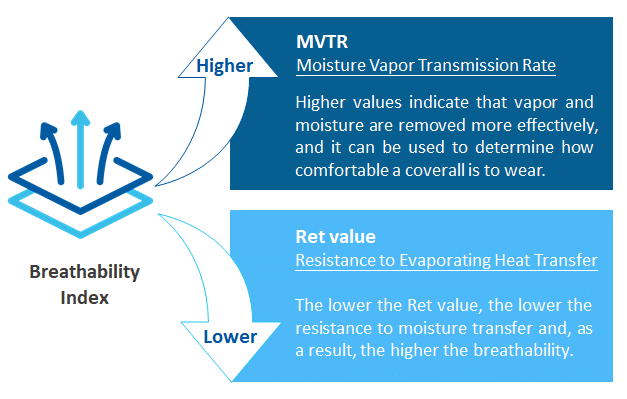
Breathability Ratings in Outdoor Clothing
Here’s a general guide to breathability ratings and what they mean:
MVTR
| Breathability Level | MVTR | Suitable For | Examples |
|---|---|---|---|
| Low Breathability | Less than 5,000 | Low-intensity activities or cold, dry conditions | Basic rain jackets, windbreakers |
| Moderate Breathability | 5,000–10,000 | Moderate activities like hiking or cycling | Mid-range outdoor jackets, softshells |
| High Breathability | 10,000–20,000 | High-intensity activities like running, mountaineering, or skiing | High-performance Gore-Tex, eVent |
| Very High Breathability | 20,000+ | Extreme activities where maximum moisture management is required | Advanced technical gear |
RET
| Ret Range | Breathability Level | Comfort Level at Activity Rate |
|---|---|---|
| 0-6 | Very Breathable | Comfortable for high activity |
| 6 to 13 | Good Breathability | Comfortable for medium activity |
| 13 to 20 | Average Breathability | Uncomfortable for high activity |
| 20 to 30 | Low Breathability | Okay for low activity |
| 30+ | No Breathability | Uncomfortable quickly |
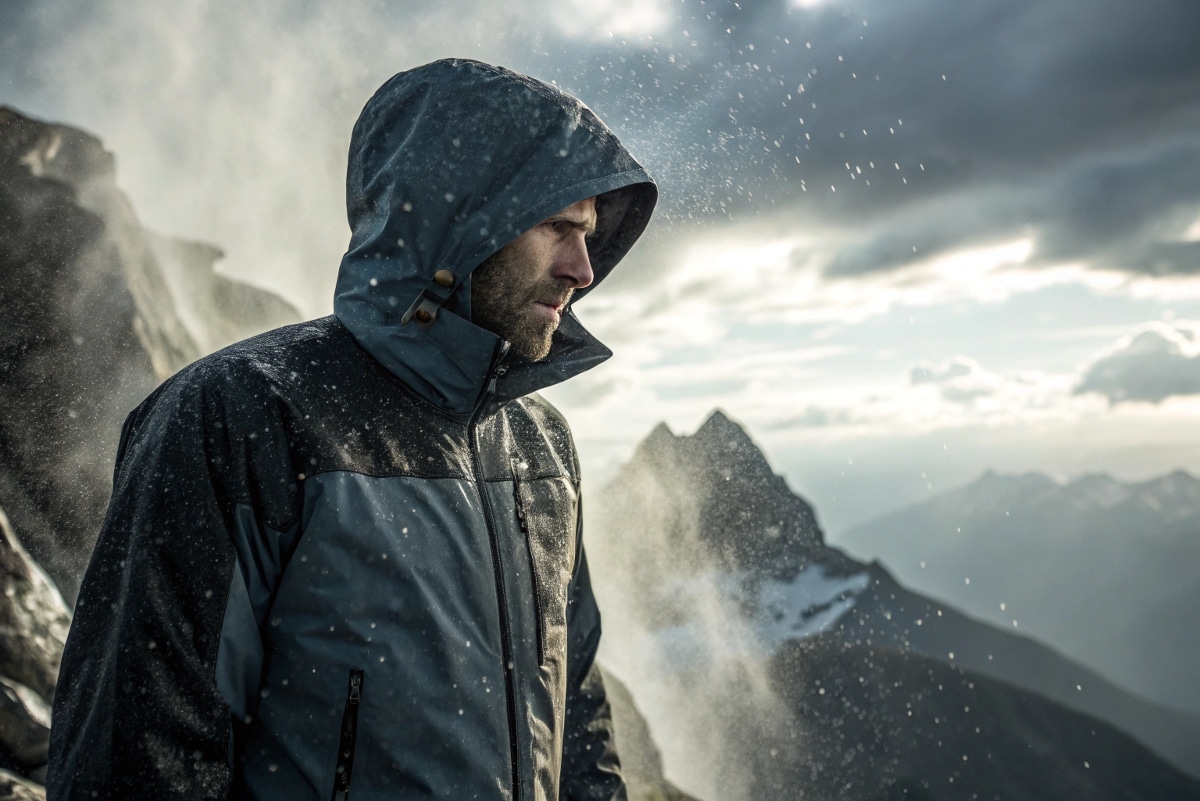
What Makes a Fabric Breathable?
Breathability in fabrics depends on several factors, including the material's structure, treatment, and design. Here’s a breakdown of what makes a fabric breathable:
| Factor | Description |
|---|---|
| Material Composition | Natural fibers like merino wool or synthetic fibers like polyester are designed to wick moisture. |
| Fabric Weave | Looser weaves or knits allow better airflow and moisture transfer. |
| Membrane Technology | Fabrics with microporous membranes (e.g., Gore-Tex) allow vapor to escape while blocking water. |
| Coatings and Treatments | Durable Water Repellent (DWR) coatings enhance breathability by preventing water saturation. |
| Design Features | Vents, mesh linings, and strategic seam placements improve airflow. |
Why Breathability Matters
- Comfort: Prevents sweat from building up inside your clothing, keeping you dry and comfortable.
- Temperature Regulation: Helps regulate body temperature by allowing excess heat to escape.
- Performance: Enhances performance during physical activities by reducing discomfort and fatigue.
- Prevents Overheating: Reduces the risk of overheating, especially in high-intensity or warm-weather activities.
How breathability works: Airflow and moisture transfer
Breathability shows how air and sweat move through fabric. Airflow brings in fresh air, keeping you cool. Sweat evaporation stops you from feeling sticky or wet. These two things work together to keep you comfy during activities.
Scientists use tools to measure breathability. For example:
-
The Moisture Vapor Transmission Rate (MVTR) tells how much sweat vapor passes through fabric in a day (g/m²/day). Higher numbers mean better at removing sweat.
-
Air permeability checks how easily air moves through fabric. It’s measured in cubic centimeters per second per square centimeter (cc/s/cm²).
Tests like ASTM D737-18 measure how much air flows through fabric under pressure. These tests show if fabric works well for active things like running or hiking, where breathability is very important.
Factors Affecting Breathability
| Factor | Description |
|---|---|
| Fabric Type | Materials like Gore-Tex, eVent, or Polartec are engineered for high breathability. |
| Layering | Proper layering (base layer, mid-layer, outer layer) improves overall breathability. |
| Design Features | Vents, mesh linings, and zippered openings enhance airflow. |
| Weather Conditions | Breathability is more critical in warm or humid conditions. |
How to Choose Based on Breathability
Best ratings for casual wear, sports, and outdoor fun
The right breathability rating depends on how you’ll use the fabric. Casual wear, sports, and outdoor activities need different levels. For easy activities like walking or relaxing, 5,000 g/m²/24 h works well. This keeps you comfy without too much sweat buildup.
For active sports like running or biking, pick fabrics with at least 10,000 g/m²/24 h. These handle more sweat and keep you dry. For tough outdoor activities like hiking or skiing, choose fabrics rated 20,000 g/m²/24 h. These give the best airflow and sweat control.
| Activity Level | Breathability Rating (MVTR) |
|---|---|
| Relaxed Activities | 5,000 g/m²/24 h |
| Energetic Activities | At least 10,000 g/m²/24 h |
| Intense Outdoor Fun | 20,000 g/m²/24 h |
Weather and activity: What to think about
Your climate and activity level affect the best breathability rating. In cool, dry weather, fabrics move sweat out easily. But in hot, humid places, breathability drops as pressure changes less.
When picking fabrics, think about these things:
-
Fabric type and weight: Loose, light fabrics let air flow better. Tight ones block it.
-
Sweat control: Fabrics that wick sweat help you stay cool.
-
Fit: Tight fits are better for sports. Loose fits are good for relaxing.
Knowing these tips helps you choose fabrics that match your needs. This keeps you comfy and ready for any activity.
Maintaining Fabric Breathability
How washing, drying, and use affect breathability
How you care for fabric changes its breathability. Washing removes dirt and oils that block airflow. But strong detergents or hot water can harm the fibers. This damage makes it harder for air and sweat to pass through. Drying is also important. High heat from dryers can shrink or weaken fabric. This lowers its ability to manage air and sweat.
Using fabric often can also reduce breathability. Movement causes friction, which can change the fabric’s structure. For example, water-resistant coatings may wear off over time. This makes the fabric less breathable and protective. To keep fabric working well, follow care instructions. Avoid over-washing or using high heat when cleaning.
How ventilation features improve airflow
Ventilation features help fabric breathe better. These include special patterns and mesh designs. Breathable patterns let air move freely, keeping you cool. Mesh designs, common in sportswear, allow airflow while staying strong and stylish.
| Design Feature | Effect on Airflow |
|---|---|
| Breathable Patterns | Improves air movement |
| Mesh Designs | Boosts airflow without losing style |
When picking fabrics, look for these features to improve breathability. They work with the fabric’s natural qualities to keep you comfy. Proper care and these features help fabrics stay breathable for a long time.
Knowing the breathability rating of fabrics helps you pick wisely. Fabrics with good airflow let heat escape and sweat dry fast. For hard activities, pick fabrics that handle sweat well. Mixed fabrics, like polyester and cotton, breathe better than just polyester. These keep you comfy during exercise.
Tip: Think about your activity and weather when choosing fabrics. Light, airy fabrics are great for heat. Thicker ones are better for cooler days.
FAQ
Can waterproof fabrics still be breathable?
Yes, waterproof fabrics can breathe with special coatings or membranes. These block water but let sweat vapor out, keeping you comfy.


